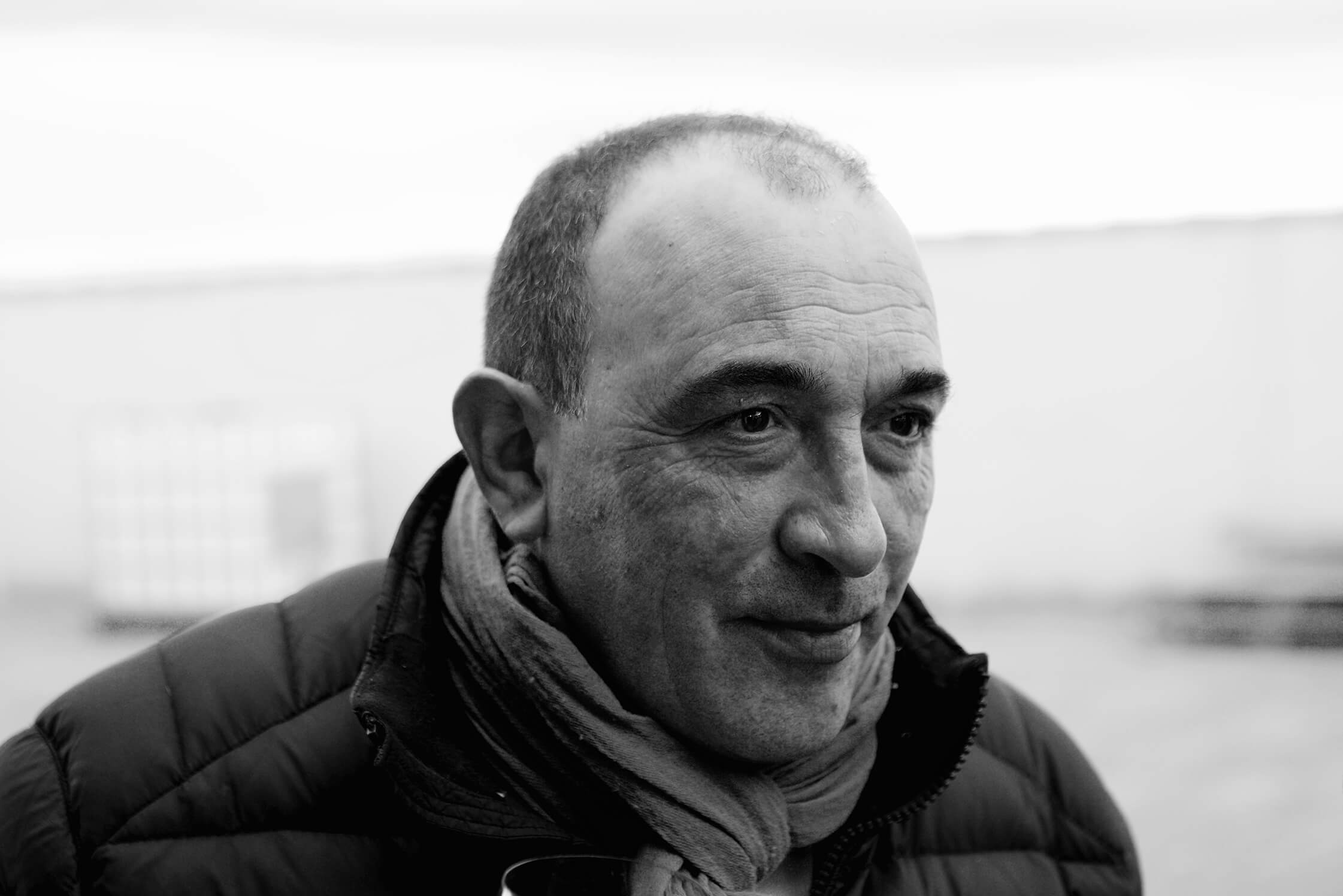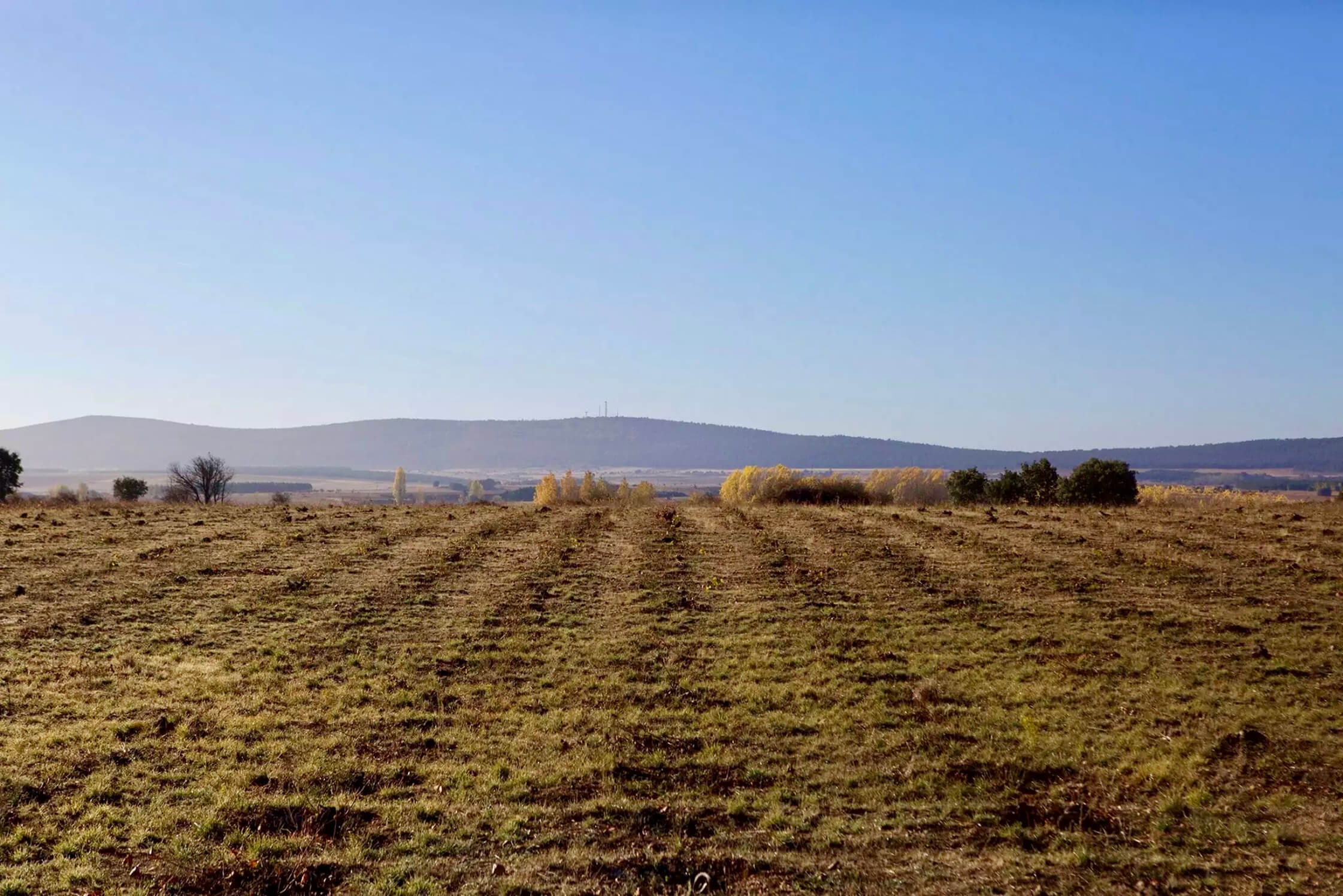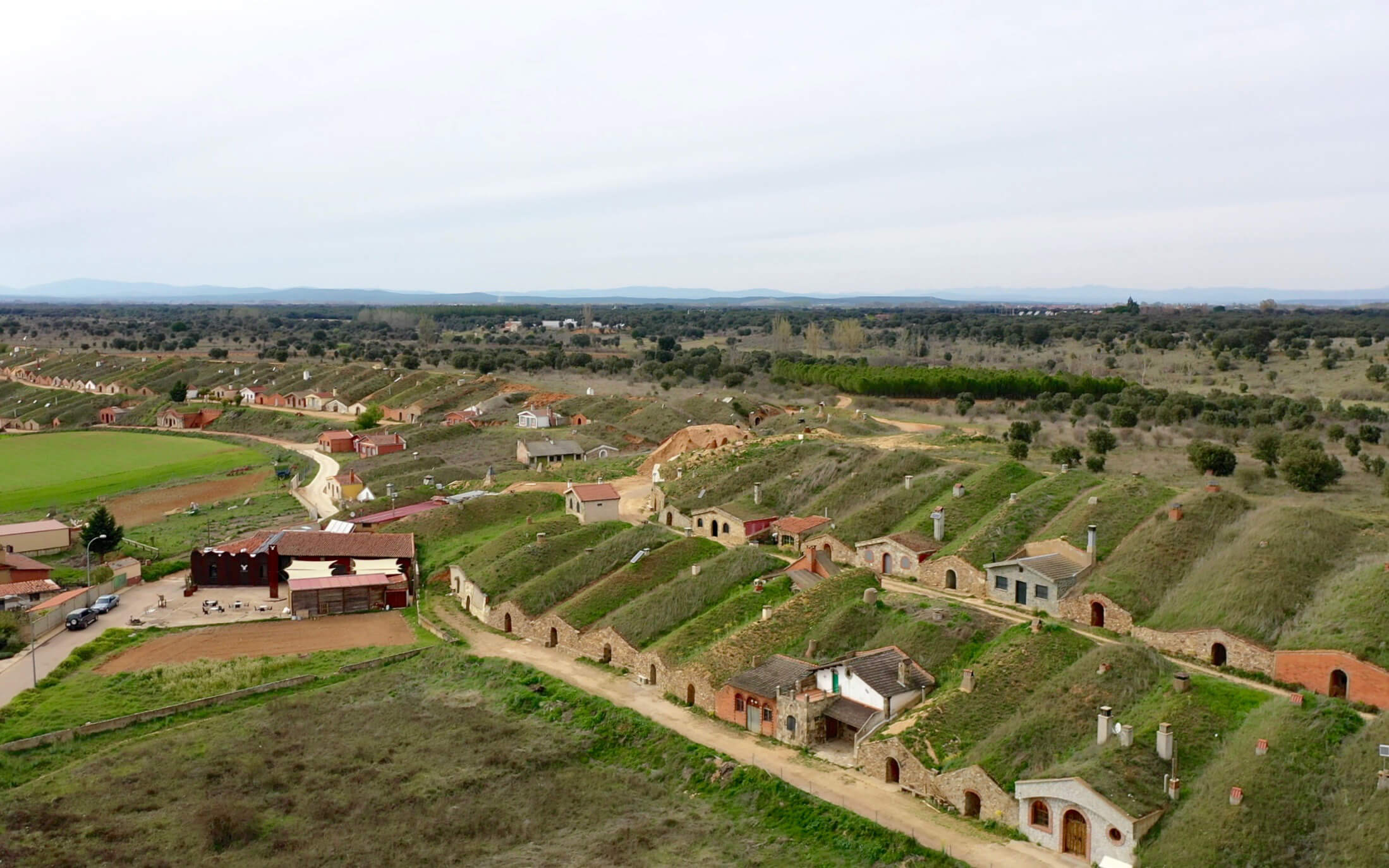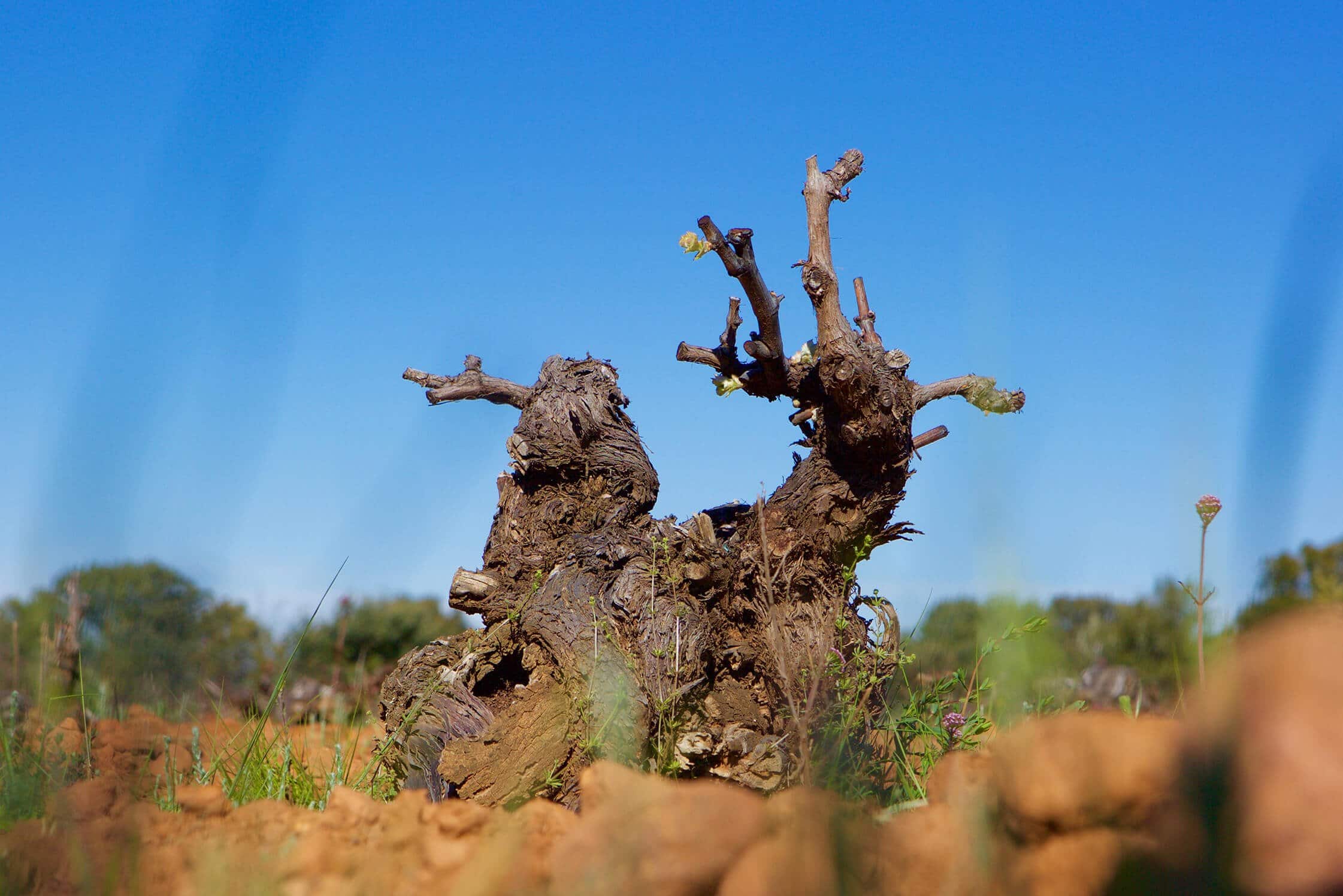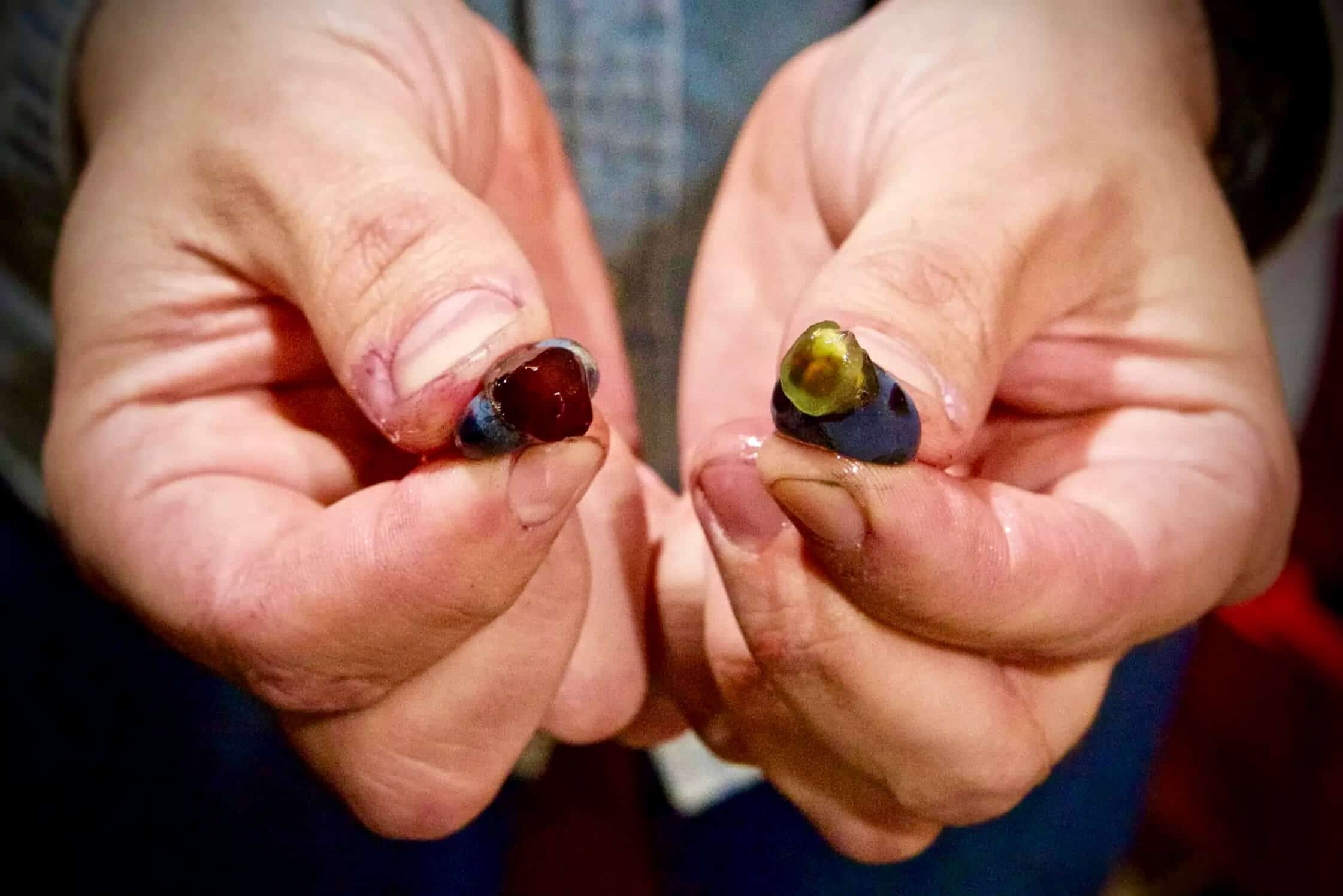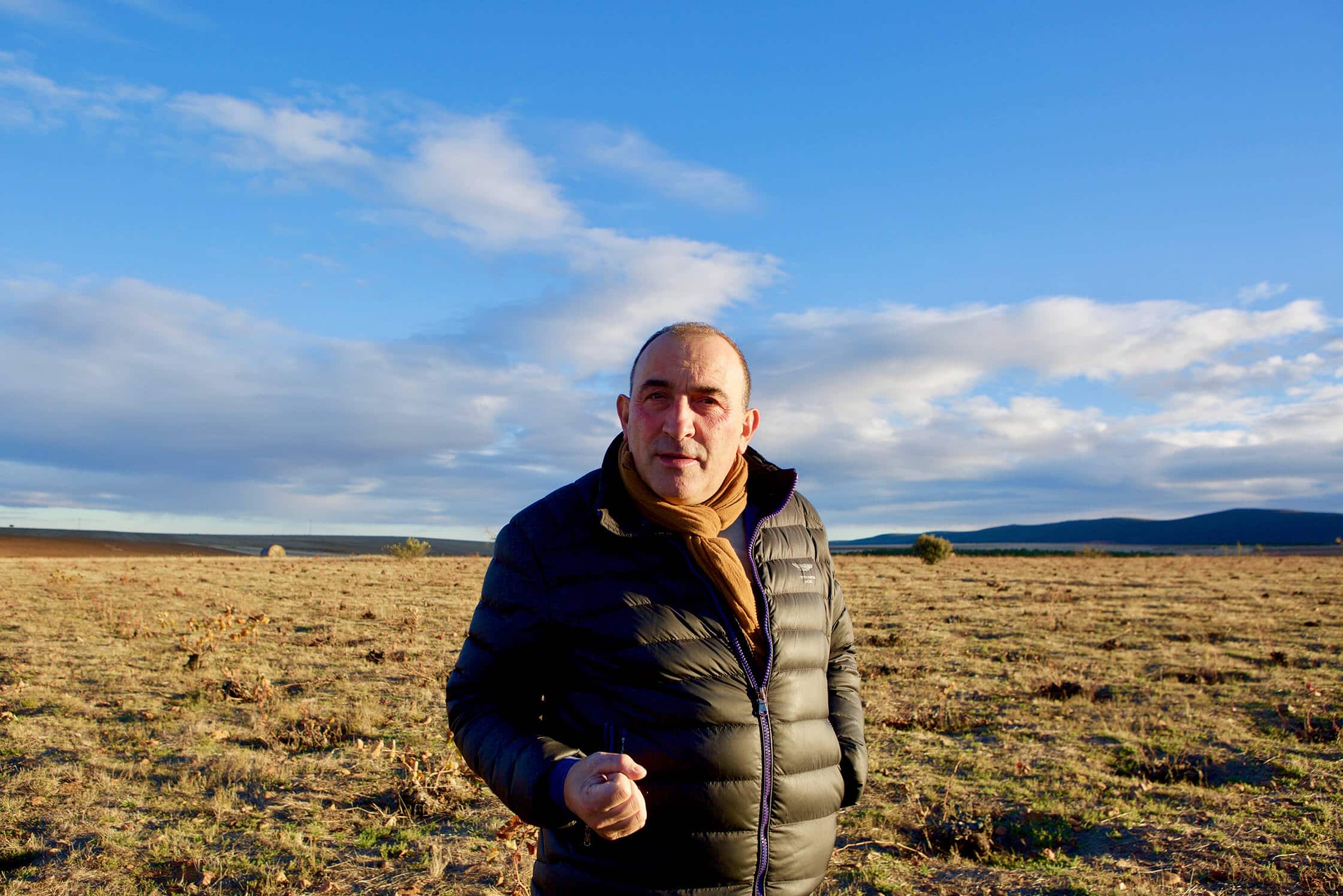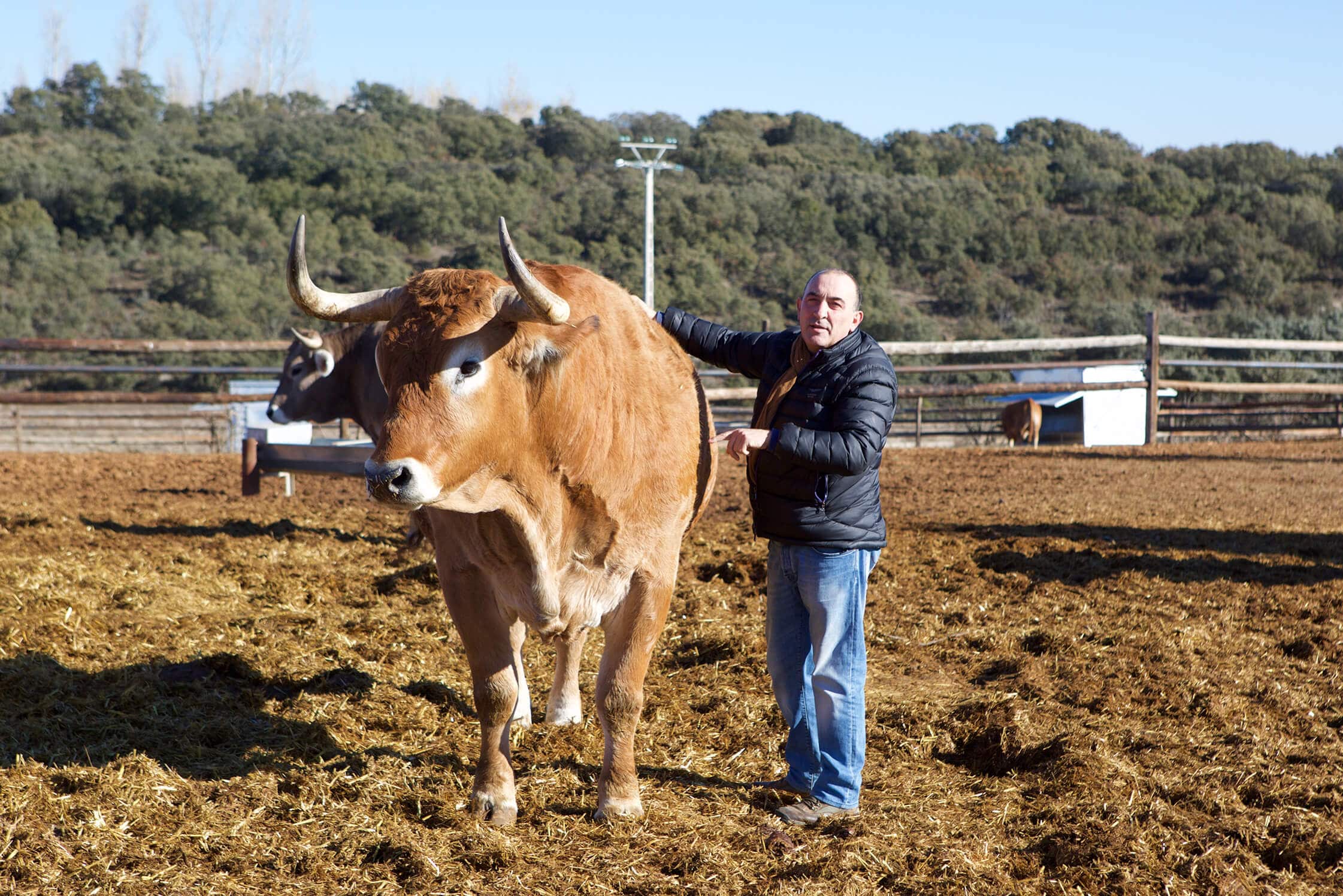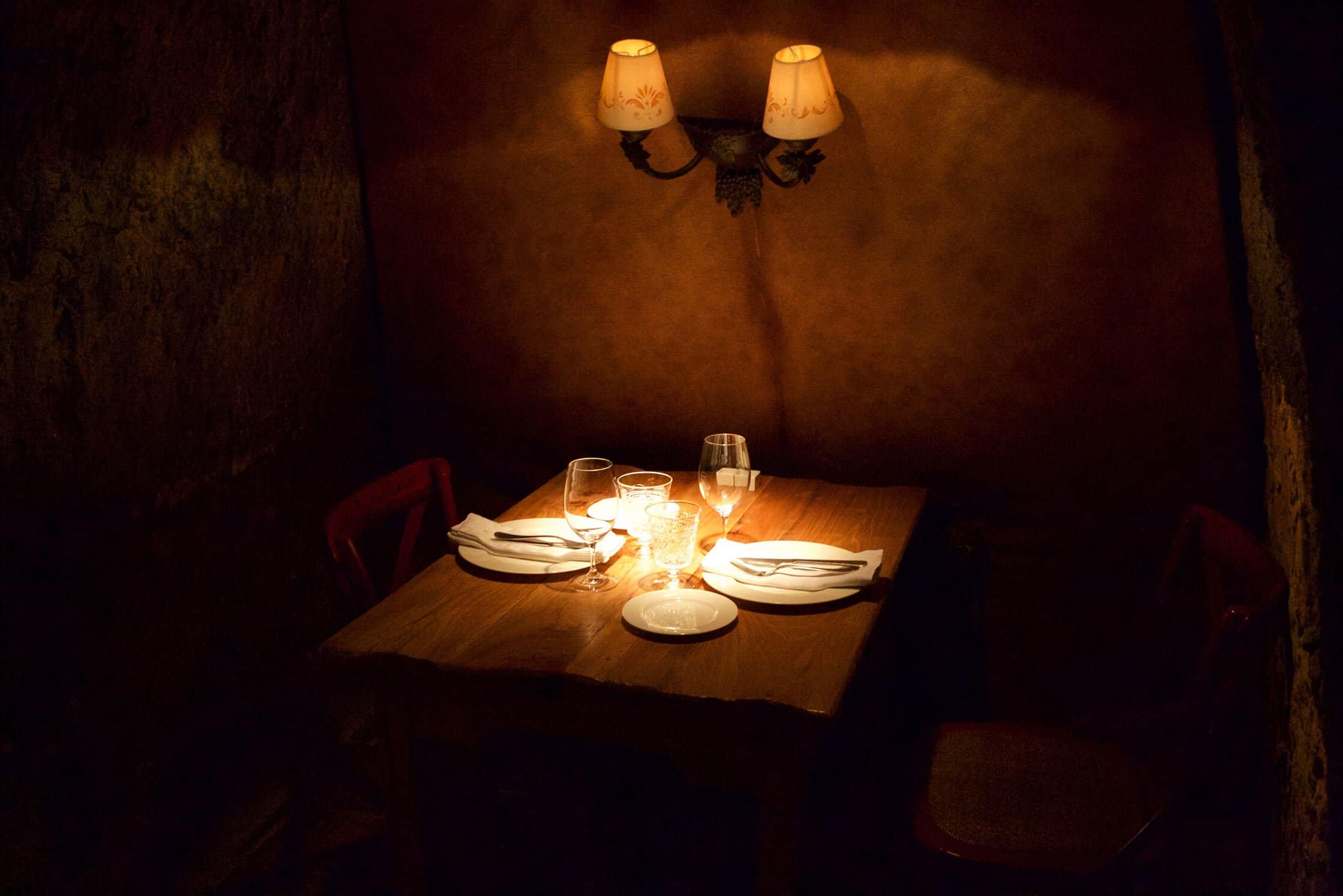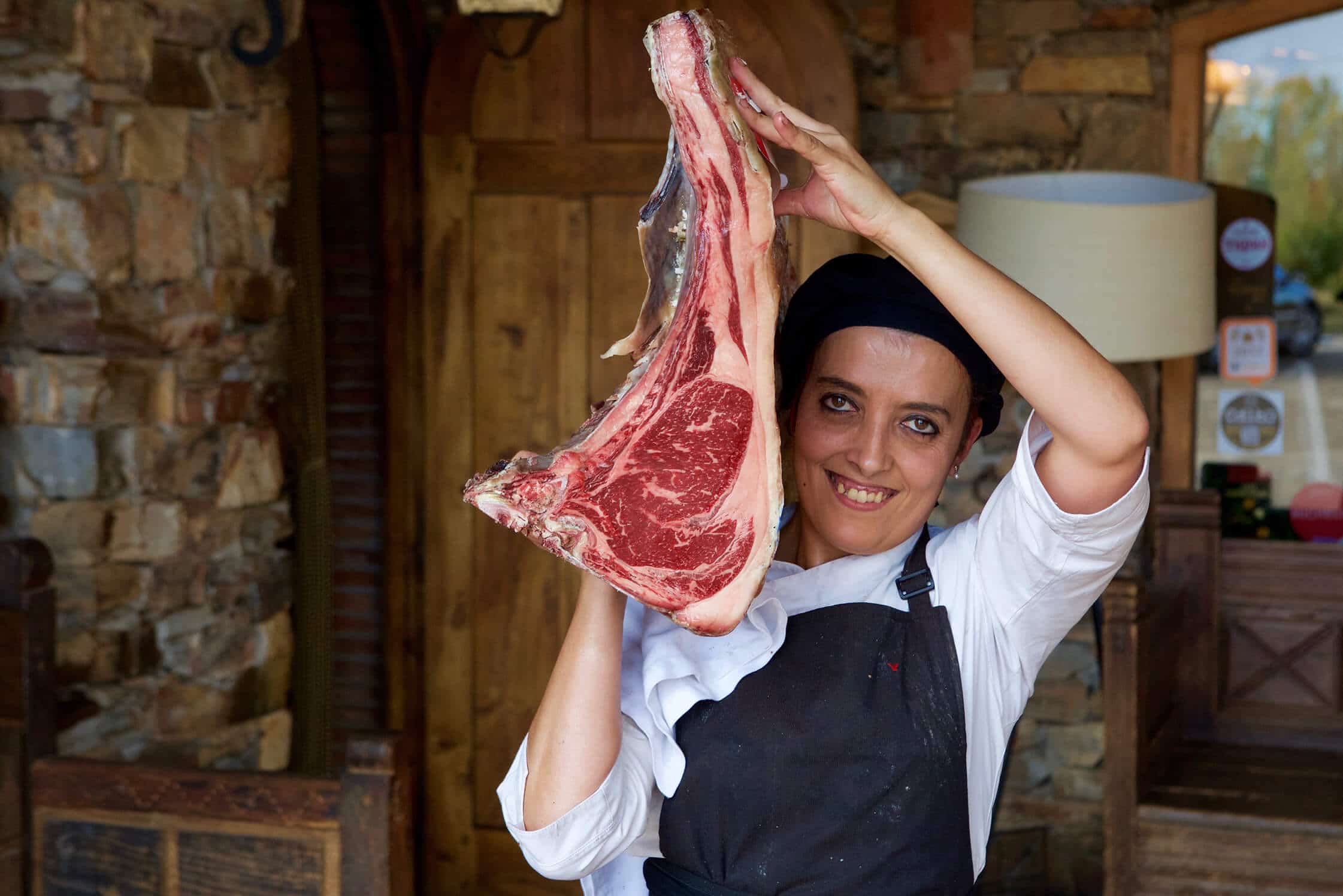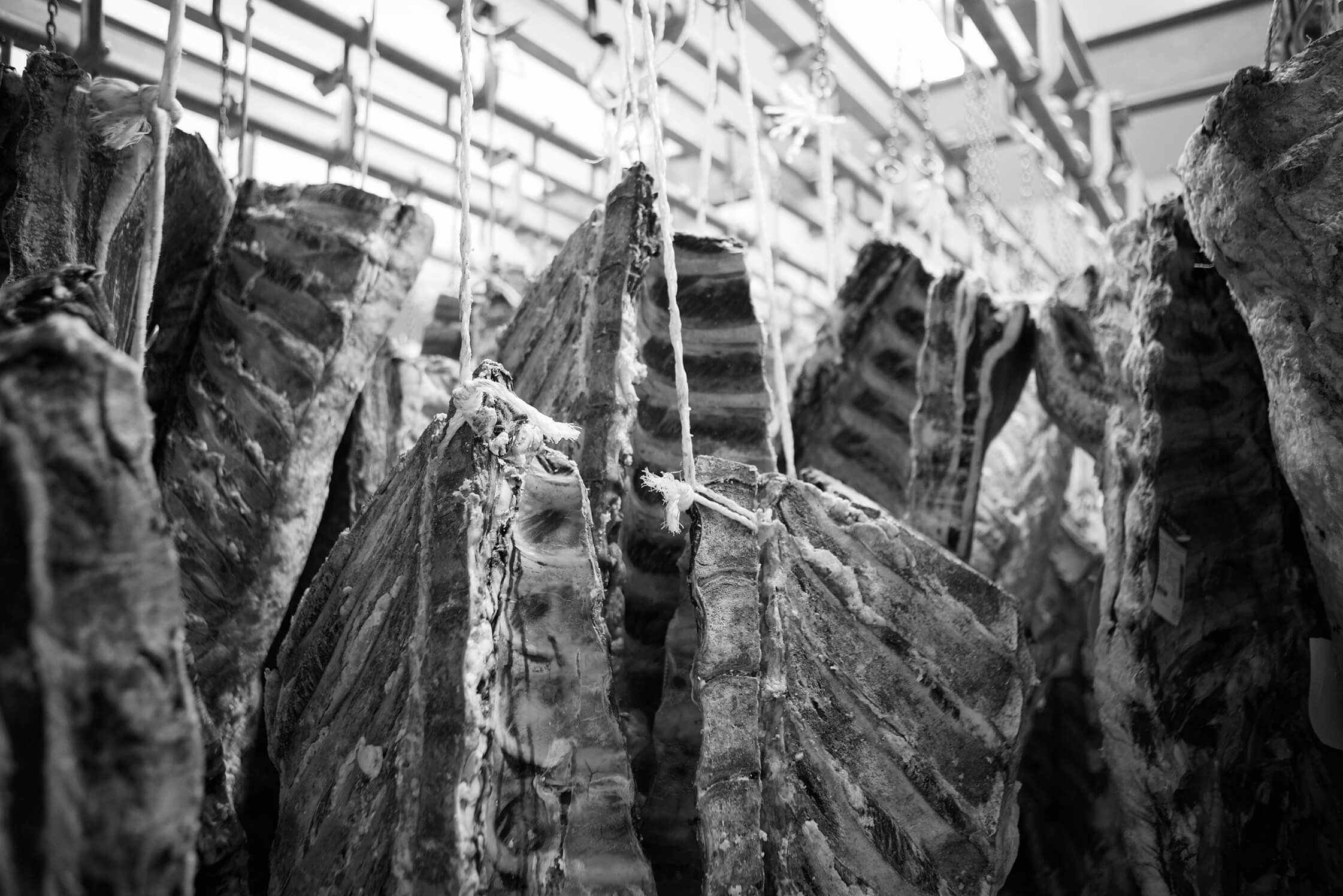Bodegas Gordon
Photography and writing by Ted Vance.
I first met José while on the wine trail with my wife, Andrea, and the well-known food and wine writer, and good friend, Jordan Mackay. Jordan was writing a book on steak and at the end of our tour through Italy, France and Galicia, on our way to the Madrid airport, he wanted to stop by José’s restaurant, El Capricho, located in the far western end of Castilla y León, at the foothills of Galicia’s portion of the Iberian Massif. While sitting in the lobby of our back country Spanish hotel with jamon hanging from the ceiling and the televisions blaring sports and the news on all sides of us, I began to ask Jordan about this restaurant that we were about to go to. He started telling what he knew of José’s story over a pregame beer in the hotel lobby and suddenly pointed at one of the televisions with a reporter and a guy in a chef coat next to some huge cattle. “That’s the guy. That’s José!”
José has been a celebrity chef in Spain for a while. But once descended into the dark, orange-hued, dimly lit, and deeply shadowy clay cave of El Capricho and walk past table after table, catching unfamiliar words spoken by familiar accents from all corners of the globe you quickly realize that he is also world famous. Literally out in the middle of nowhere, meat foodies are drawn by legendary tales of steaks impossible to find elsewhere: extensively dry aged, old buey, not animals that are eighteen months or three years old fed on grain, but rather seven to fifteen years old and raised on the natural grasses and wild herbs of this desolate but visually stunning countryside whose lowest point is about 800m (2600ft) of altitude; buey raised and befriended by the guy in the chef coat wielding the pirate-sized blade and an ever present smile. As José stands over the table ready to cut and serve your steak, he looks at the meat and knows from which one of his old friends made the “sacrifice” for your meal. This is a different level of connectivity to food. And when you learn about José as a person, the value and the nuance of the food rises to another level.
One of Jordan’s Spanish journalist friends told him that El Capricho was likely to be the best steak in Spain. This means it would be in the running for possibly the best steak in the world. I’ve learned after the fact that those can be fighting words in Spain, except for those who have actually eaten at El Capricho—if it wasn’t the best, it was close to it. It doesn’t take long once I share my many experiences and love for El Capricho for others to share what they are sure is the best steak to be found in the world (or more likely what someone else told them was the best). The truth is that the best steaks, and I qualify this as the beefiest beef, as Jordan might say, I’ve ever had were at El Capricho and Asado Etxebarri, both Spanish restaurants. The steaks at these two places were different, and they are both the best—tied; different bests, no winner—just like great wines. Settled. However, I think the thing that separates El Capricho from all others is the diversity of beef products and how epic all of them are. It’s not just about the battle axe chuleton at El Capricho, it’s about the three-year aged cecina (which simply cannot be possible to beat anywhere in the world), the salchichon, the steak tartar is perfect, the steak carpaccio is more perfect, the bone broth is a spiritual meal, the tongue, the fat on the edges of the chuleton! The salads, the vegetable plates, the wine list! Everything is on point, but delivered with José’s hospitality, which feels like a hug is delivered with each plate.
What started out as a wonderful first dinner had the chance to go sideways while thumbing through the book-sized wine list loaded with treasures on every page. Jordan was making small talk with José through my Chilean wife’s proficient Spanish, explaining that I was a wine importer. José promptly invited us to taste wines from his new wine project. How could we say “no way” to this José? Not possible. Plus, we already had a date with the buey in the morning. Both events would prove to be a good surprise, like the size of the steaks!
A Short Interview
Fall 2020
What came first, wine or the restaurant?
The wine… My wine project is a return to our roots. I think the first kid in a family inherits the genes of the mother and the grandchildren inherit the genes of the grandfather. I feel like I inherited the spirit of my grandfather. My grandfather drank around 3 liters of wine a day. It was part of his food. Everyday he had dinner in the winery. A lot of times by himself and sometimes with others. My grandma stayed home while he ate here in this cave alone—a strange guy.
How did El Capricho get started?
It’s kind of a long story. Do you have time for a long story?
All day.
My grandfather had a veggie garden outside the bodega and on the wall of his winery he used put a sign that read, “El Capricho, Bodegas Gordón.” In the past, El Capricho meant “the fresh food goats used to eat.” El Capricho was a bodega in the past, not a restaurant. All the wines were made in barrels 500l-1000l walnut barrels; there were no small barrels in the past. I don’t have any small barrels today either.
My grandfather, Segundo Gordón, died at age 64. As I mentioned, he drank a lot, but he also smoked a lot. My father, Pedro, is eighty-seven. He drinks a lot too, but he never smoked. Our family had a garden area out in front of the bodega and people that would come with their own food would buy wines from Segundo. At first, it was a bring-your-own-food operation.
The wine was so fresh, and it was poured straight from the barrels. The people went crazy for it and they would drink and drink. They were all drunk, all the time. Then Segundo and Pedro would bring things from our garden and make salads for the people. A little further down the road, the garden started to disappear because we needed more parking space. And eventually we added a roof but there were no walls and the people just kept coming.
When I was twelve, I was already helping. (José was born in 1966.) I became the waiter. During this time, I began to understand service and people started to really like me. I feel like I had a special gift, something we call a don, for people. I love hospitality.
I started telling my parents that they should start to prepare the same kind of food for the people they did with the pigs they killed at home. They started to do it, and the people bought that too.
A little after that, I said, “why don’t we have a little kitchen and make tortillas?” My mother made them from homegrown eggs and all the vegetables were from our garden, so everyone became crazy for these tortillas. We would make a giant quantity tortillas and fried potatoes with veggies and we’d go until we were sold out. That’s how the demand for El Capricho began.
When I was sixteen or seventeen, I set up a small barbeque and learned how to cook beef from a relative who had arrived from Argentina. Then it was chicken, pork, ostriches; We cooked everything on the grill.
The business was only open during the three months of the summer because that’s when it’s nice out and we only had outside dining. Eventually I tried to convince them to make space for restaurant inside the bodega. I started to remove a barrel here and there, and that would go unnoticed. Eventually they figured out what was happening, and then my mother would have to protect me from the wrath of my father.
Inside the winery people would eat with only candles; it was magic. Little by little the demand grew, and I began to take over the business more and more. Eventually, my father stepped aside and let me run it. The bar area of the restaurant today is where the restaurant started.
Buey: Spanish for Steer.
José buys different breeds of cattle (in this case, mostly buey) from all over Iberia and raises them in his fields until they begin to physically fail due to old age. He has a relationship with them and visits the herd almost every day. The buey live well and are respected by their caretakers until the day of their “sacrifice.” Their diet consists of high desert wild grasses, and wild herbs, like thyme and lavender. The taste of the beef at El Capricho is like nothing I’ve ever had before it: simple on technique, deep on flavor, tons of nuance, and as long as it gets on complexity. They are dry aged minimally for ninety days but often much longer than that. The flavor is a deep flavor of beef, not corn-fed fat. But, with Galician and Iberian grass-fed beef the saturated yellow fat that makes up about a third of each chuleton (tomahawk rib steak, or ribeye), and it’s as good as the steak—each bite seems perfect with a bit of fat along with the meat, about a one to three ratio seems about right.
When did the buey come to Jimenez de Jamuz?
Everything for me began to make more sense when I went one day to Galicia to unknowingly buy my first buey. One of our customers who was a hunter told me to go buy this buey. I said, “How am I going to buy a buey? It’s too big!” But he told me if I buy it he’d take half of it.
I went to Galicia and when I met this majestic animal I realized that this buey was special. I think there’s a magical, mystical relationship between the man and the buey. For some reason I sensed something in the air—the nobility of the animal.
The owner of the buey went underneath this huge, old animal, his life at the mercy of the beast. While I was there the guy made a pot of pig braised with veggies. As we ate I thought about how strange it was that the buey was treated like a special member of the family. They even the warmed the water in the winter for him to drink. I always had a sense that all that care and sensibility would exist and be reciprocated between man and these majestic animals.
I took the animal back with me a day before the “sacrifice” so it wouldn’t be stressed. I tried to be as respectful as I thought I could be when I killed it. The meat was dense, so I felt obliged to aged it for ninety days, and in the moment I finally had the meat I became emotional. When I tasted that animal, I knew this was going to be what I do for the rest of my life. That’s how it all started.
Jefe Gets His Hands Dirty, And Your Shoes Too.
I’ve walked inside the pens with José and nearly two hundred one-to-two-ton buey, three times—almost every one of our staff members who’ve come for a visit have been challenged by José to enter the arena. If one ever seeks to truly be present in the moment, one doesn’t need a lifetime of meditative practice, they just need to walk beyond the fences, literally made of whole trees, with José. I guarantee nothing at all will be in your mind when facing two hundred bueyes except the present moment.
One unexpected nuance while walking through the bueyes’s living quarters trying to avoid the buey patties (which are much bigger than those of a cow). Strangely, the air is filled with these sweet scented, pungent patties and they smell quite close to the food they eat (thyme and lavender) more than what we normally associate with this kind of thing. Crazy, I know, but these old beast patties smell actually kind of fruity and floral. Yeah, that sounds like a serious stretch for buey patties, but it was some pretty complex…, you know what…, even after most of the animals have lived for more than a decade. So why do these patties smell kinda nice while of other penned-up-cattle patties usually just smell like shit? It’s simple: José’s animals are on a good diet, they’re healthy and not stressed. They’re just chillin’, and they’re only going to have one more really bad day on José’s watch. But we all have that same bad day, only José ensures that theirs is what he considers an honorable death. He writes on his website, “Now our only challenge will be to honor them as they deserve.”
How does your philosophy as a chef and rancher carry over to the wine?
It will be carried with the same respect I have for the buey: to do our best to respect the soil, respect the nature, respect the vineyard, and honor my family’s past and their knowledge. I want to follow the wisdom of the past because that is what I feel I should do. To recover that history. To pick up where my family left off. To do this, we must understand how each single plant and treat it as an individual, like they did before machines. I’m learning everyday how to better do this work.
El Capricho Wine List
José’s restaurant has a massive cellar, both physically and in the number of bottles. There are loads of wine from all over Europe with great Burgundies (from Denis Bachelet, to Bonneau du Martray and Romanée-Conti) Bordeaux, Barolo, Barbaresco, and, as one would expect, a lot of great, old Spanish wines (like the 1991 Vega Sicilia Valbuena I had on our first meal there for only 130€ on the list!) and a lot of the increasingly hard to get progressive Spanish young guns too, like the top rariteis from Envínate, Guímaro, Comando G, etc. The list is extremely (and surprisingly) diverse for a non-Michelin starred Spanish restaurant, and he built this tremendous collection long before Agustí Peris, a sommelier, most notably from the now retired, El Bulli, arrived in 2020. The list clearly demonstrated José’s seriousness about wine, and the quality of his palate. He’s emotional about wine, and it seems to be gaining some serious ground on his focus as an exceptional chef and rancher. He’s freakishly motivated to share his insights about food, wine and life, and has an insatiable lust for living despite his life centered around taking the life of the majestic beasts he calls friends. José is poetic and romantic (read this); his desire for human and animal connection is always on his sleeve. Whenever I see him, I feel like he’s looking at an old friend, a brother from a distant land, though I’ve only known him for a couple of years now.
Jose’s Wines
It’s no surprise that José’s wines are a perfect match for beef. They really are, and it’s quite impressive, if not inconceivable, that he found the route he wanted to go straight away. Led by Mencía and accompanied by other vinous characters, like Garnacha Tintorera, Prieto Picudo and Palomino, the wines carry the freshness of the cold night winds and the wild aromatic herbs that litter the countryside. Spain is well-known for its umami-rich food, and he’s captured that too. That’s why they’re such a fabulous match for food. They taste like a wine version of liquid beef. Sound unappealing? It’s not. It’s a bigtime nod to the merit of savory over sweet in wine, which makes perfect sense if you have it with food. Honestly, I’ve not yet understood how a highly fruity red may be considered a perfect match for food with deep, meaty and earthy flavors, like you would most certainly find in José’s restaurant.
Perhaps what sets his wines apart from others is that they’re not a mouthful in the sense of what people consider a “great steak wine”. They’re discreet and texturally joyful, not boisterous and overtly manly. They demonstrate his commitment to the full experience of a meal at his restaurant, where El Chano is served as a sort of “house wine”. You can be sure that you’re likely to not ever have a house wine so perfectly suited for a restaurant’s cuisine. But you’ve probably never eaten at a serious culinary establishment where the chef actually works in the vineyards and cellar of the wines he makes for his restaurant.
What style, or styles of wine, give you direction for your wines?
I think you understand by most of my wine list what kind of wines I prefer. I like wines without a lot of extraction. I want a wine that expresses its soil. I don’t like high alcohol wines with too much structure, which is a problem for much of Spain.
My first task is to understand each different parcel and place. Right now I can’t do everything I want to do because my wines are made in the cellar of Fuentes del Silencio, with their head winemakers, Marta and Miguel. They are making great wines and their criteria is leading the way for me now. But when my space is finished, I will be able to play more and discover more things.
For example, in 2019 we are already doing things a little differently since our first vintage in 2016. We reduced the percentage of Garnacha Tintorera and Palomino and increased the Mencía and added a little bit more Prieto Picudo (a name that means black, with a point). I hope it will be more balanced while keeping the freshness, elegance and minerality. We’ll see.
I have a white too that you haven’t tasted yet. It’s a field blend, and some varieties I have no idea what they are. There are some plots that are more special for me, principally the ones my grandfather planted and chose very well the plants by massale selection.
There’s so much to say about Jamuz. The story is complex and once through this essay, the magnificence of this region’s potential will be laid bare, as it was for me the first time I tasted José’s wines alongside of Fuentes del Silencio’s out of barrel in the same cellar and visited their vineyards. First, we’ll start with the grapes, and then we’ll dip our entire foot into the landscape and finally, dive headfirst in the geology and soil. These elements are crucial in revealing only what appears to be the tip of this historic iceberg.
The Romans
The Romans brought the vine here, as they did to everywhere else in Spain. Between the 9th and 20th centuries, Jamuz was a considerable wine producing area, a kind of a one-stop shop for the Romans because the hillsides were perfect for vineyards, the riverbeds ideal for other agriculture requiring more fertile soils, and the hills were filled with gold.
The majority of the vineyards that exist today were planted at the end of the 19th century or beginning of the 20th and were maintained until the 1960s. Of them, many are lost, but some were maintained until twenty years ago, more or less. Now very few families are still maintaining their vineyards. We have recovered mainly vineyards abandoned twenty to thirty years ago and some as far back as the 1960s. Many parcels are dead or were retaken by the forest.
The ancient vines of Jamuz look like stout, squat animals with dense fur coats, half buried underground, with vine shoots growing in random directions out of their backs; unlike anything I’ve seen. They’re inside what is called an olla (pot), which is a hole about 60 cm in diameter and 30 cm deep to protect the vine from frost and cold. And while so close to the ground, the soil retains heat and keeps the grapes ripening as winter approaches; harvest usually happens in the two middle weeks of October.
During the recovery process of the ancient vines, a gentle rehab approach is critical. While many of the centenarian vines seemed dead, careful work can get these time capsules to produce again. Miguel and his team had to carefully dig in and recreate the ollas and unbury the vines, and any wrong move with their tools could’ve quickly ended any chance of recovery. This process is extremely tedious, time consuming and expensive, and the gravitation toward organic farming was the clear choice. With all the nature having crept back inside the vineyards, especially those closest to forests, it would’ve seemed wrong to disturb this unique setting with unnatural things.
The Grapes
The principal grape in the region is Mencía, a variety known to grow well in Bierzo to the northwest, and Galicia’s Ribera Sacra, Monterrei and Valdeorras. Between them, Jamuz may have the longest growing season and on the average likely the highest level of natural acidity, a quality this variety is not known for. Many believe Mencía to be the great red grape of Galicia, but we will see what the coming decades of climate change bring. Other reds also show great potential in Galicia, but in Jamuz this is the natural fit. Here they render wines with a stronger balance of pleasure alongside the intellect that this grape can transmit from the more stony and visually impressive terroirs further into the Galician Massif.
The next grape in line is Alicante Bouschet, also known as Garnacha Tintorera (but many think they are not exactly the same, but related biotypes)— which is not to be confused with Grenache/Garnacha. Many in Galicia refer to it simply as Garnacha, and initially I had no idea it wasn’t the same grape as Grenache, or the well-known Garnacha found in other areas of Spain further toward the east. In fact, Grenache/Garnacha has white pulp and Garnacha Tintorera has red pulp, so there’s likely little chance of them being related other than their both being part of the vitis vinifera species. This grape has a lot of acidity and serves to improve the freshness of the wines.
Prieto Picudo is a low production red grape that brings more strength to the structure. It’s more common in the Tierra de León DO, and is responsible for some of the dark color and rustic profile of the region’s wines. It contributes acidity, tannin and color to a wine.
Jamuz, A Unique Terroir
The landscape around Jamuz has a series of notably unique characteristics that help to define the wines. Interestingly, there isn’t much in the way of what is “typical” because almost all of the vineyard land was abandoned with some kept in production only to make wine for some of the farmers’ home consumption. There are almost no historical references, so this is all quite new for today’s wine world, including the current generations in Jamuz, except José and his experience as a kid with his grandfather and the wines he made. It’s a typical wine story in the northwestern part of Spain: lost history and little context.
To the north of Jamuz are the Cordillera Cantabrica, the Cantabrian Mountains, and to the west the Maciso Galaico, the Galician Massif. Jamuz is tucked into the foothills of the Galician Massif, just below Monte Teleno, the massif’s tallest mountain. Despite being within site of some of the Cantabrian range, Teleno is the mother of the Jamuz landscape: its geological genetics, its design, and its protector.
Monte Teleno, a sort of miniature version of Africa’s famous Mount Kilimanjaro with it long, flat top, reveals the hundreds of millions of years of erosion that have smoothed out its general shape. What was once likely a mountain that may have extended above the altitude of Kilimanjaro (a mere three million years old), at 19,308 feet, Teleno now rests at only 7,178 feet, and all that igneous and metamorphic rock that made up that mountain and the mountains behind it had to go somewhere.
The Jamuz river valley extends from west to east and emerges from a fuente (spring) on Monte Teleno. The massive erosion and runoff from this mountain range and into the direction of Jamuz started around 35 million years ago and largely finished up during the close of the last ice age. Many rivers in the world during these times had moments of torrent, wiping out whatever was previously there and ultimately depositing what is left today. In Jamuz, quartzite cobbles and fine-grained, slate-derived soils are found on the plateaus above the dry riverbeds where the best vineyards are located.
The Dirt
Like France’s Southern Rhône Valley, the plateau vineyards are covered with rounded cobblestones and one can occasionally find slate rocks lying around that managed to make it there in recognizable form. Slate is not a hard rock compared to quartzite, one of the hardest rocks around. A forty or more mile rough ride down from the mountain rounds out the edges of the quartzite, while it absolutely pulverizes the more fragile slate (especially with quartzite as a travel companion) until much of it has been ground into a fine sandy soil (more like talc powder) that bears no obvious visual indication of its origin. Here you will find only bits and pieces of picturesque slate rocks and the occasional outcropping in the middle of the valley, unlike the abundance found in Germany’s wickedly steep Mosel, or in Bierzo’s Corullón. Appearances aside, it is indeed slate-derived soil and it appears to govern some of the aromatic and textural profiles of the wines, while the fine soil grains of sand, silt and some clay influence the wine’s shape.
It can be observed that there is some level of correlation between the texture and shape of a wine and a vineyard’s rock and soil composition. The Mencía wines rendered in the fine-grained soils of Jamuz are more rounded and less angular—just like their soil. It would not be a stretch to say that these wines may be the closest Mencía-based wines in shape to a Burgundy grown on topsoil with a greater clay to rock balance because of the roundness of the wines, demonstrating as strong a horizontal axis than vertical. Some of José’s vineyards have a greater clay content than what is to be found in the vineyards of another one of our producers there, Fuentes del Silencio, whose vineyards are further upstream and at slightly higher altitudes. By contrast, Mencía grown on steep hillsides with slate bedrock and topsoil in the nearby Corullón, a section of Bierzo, are more taut, angular and spare in their horizontal axis but more vertical, much closer to a wine from France’s Côte-Rôtie, or even texturally similar to a Spätburgunder (Pinot Noir) from Germany’s famous Assmanshausen vineyard, grown on a sort of pink metamorphic, slate-type rock.
The soil in Jamuz is typically orange to dark orange—a consequence of the dry and cold Miocene epoch that transformed the minerals in the sediments, resulting in a lot of iron oxide. There are all sorts of minerals and metals in the soils along with sands, silts, kaolinite clay (like Cornas) and smectite clay (like the Côte d’Or), gold (like, well… nowhere!) slate, limestone—must I continue? Ok, if you insist. There are also the minerals found in granite rock, like quartzite, sheet silicates like mica, potassium feldspar, plagioclase and more.
If it’s easier, you can forget most of that last paragraph ever existed and just chalk this one up as very complicated and diverse with about everything imaginable.
The Geology
While the geology of Jamuz is completely connected to the Galician Massif, the climate has little relationship to Green Spain and absolutely represents that of typical Castilla y León except for its extremely high altitude. The Cantabrian Mountains to the north and the Galician Massif to the west are natural gatekeepers that allow very little oceanic influence to pass beyond their guard into mainland Iberia. They’re referred to as a rain shadow, and this topographical feature along with the warm Mediterranean influence from the south and the desert in-between is the reason for the arid landscape. The winters are long and harsh and the summers hot and dry, however nighttime temperatures drop quickly because of the rush of wind from Teleno and the other mountains; even summer nights require a substantial sweater to be comfortable outside.
High Altitude Impact
Another extremely important influence on the shape, texture and structure of the wines is the vineyard altitude. With an average of 855 meters (2805 feet), this marks likely the highest average elevation where Mencía is planted in Spain, with the only contender perhaps being some sections of Bierzo, well above Corullón; that said, there is hardly a vine in Jamuz that sits lower than 800 meters (2,625 feet). Higher altitude sites bring tension due to stress on the vine, and a very late picking season further develops depth of complexity from more hang time for the grapes. Desiccation or over-ripening of the clusters is less a consideration here than in lower altitude areas during the summer and late fall heat. The result is Jamuz grapes with fully lignified stems, taut berries and the influence of the full length of the beginning of spring to the end of fall, its flora, fauna and any other factors that may contribute unique nuances found in these wines. This is real complexity and opportunity for subtleties and more distinction to emerge with bottle age.
The desert landscape is filled with indigenous holm oak trees, wild thyme and lavender, and without a single alien eucalyptus tree in site to muck up the soils and influence the taste of any of the wines. This polyculture area is rich in wildlife and untamed land and the good vineyards are alone and usually without too much cultivation around them, save some tree groves inside the riverbeds far away from the vineyards.
Final Thoughts, For Now.
The soft touch and thoughtful approach in the vineyard and cellar allow the wines to express their entire environment, not solely led by its solar and wind influence, geologic setting and grape varieties. José’s wines transport you into the Jamuz with the cold Telemo winds, its lift and freshness; mineral nuances and roundness from the fine-grained pulverized slate soils; the Spanish sun, the smell of winter coming when the grapes were picked; the wild, dry and pungent desert thyme, lavender, rosemary, chamomile and the wild roses. This place is special. It’s literally in the middle of nowhere, far away from some of nature’s greatest adversaries, industrialization and monocultural farming. In one of the last frontiers of rediscovery of ancient vines in the wine world, José and his close compatriots at Fuentes del Silencio are breathing Jamuz back to life. -TV

